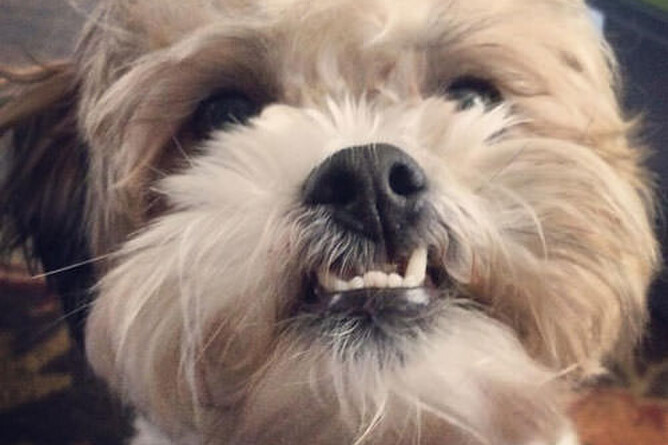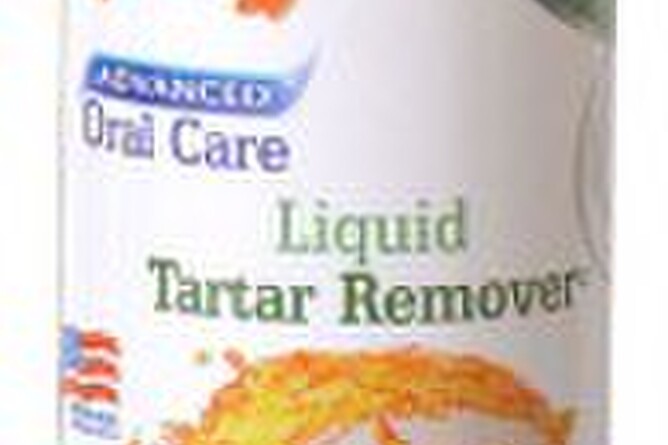Our tips help you get the job done while keeping your dog happy
First things first: you cannot use a human toothbrush or toothpaste when brushing dog teeth. You must use a proper dog toothbrush and dog toothpaste. Using the wrong tools can easily put your pup off toothbrushing and could poison your best friend.
Photo courtesy of Josh Tremper
How to find the right toothbrush for your dog
The Dogington Post suggests these guidelines when deciding on a toothbrush to brush a dog's teeth:
- Choose the right size for your dog and for you. It shouldn’t be too big or too small.
- Judge the level of comfort of handling. The toothbrush should be a good match for both you and your dog as it’s easy for you to move it around.
- Check the handle. Vets recommend dog toothbrushes with shorter handles to make it easier to handle.
- If you have a big dog, use the small finger brushes for the best results.
- For smaller and little dogs, the ideal size would be the standard toothbrushes.
- But if your dog is medium-sized, it can be a bit harder to choose the right toothbrush. Trying different brushes is the best way to find out what kind of toothbrush fits your dog best.
Great! You’ve chosen a doggy toothbrush and purchased some doggy toothpaste. Now, how do you get them into your dog’s mouth without a reenactment of a professional wrestling match?
Like a wrestler, you don’t just rush into the ring and expect to win the match. Take baby steps.
Better yet, take puppy steps.
Here are some great tips for getting your dog’s teeth clean and their breath fresh.
How to brush my dog’s teeth
Pet Education gives an insightful breakdown in how to properly and effectively handle the toothbrushing process with your furry best friend.
Beyond keeping the experience fun and relaxed, here are some tips for getting your pup used to their new brushing routine.
Step 1: Give them a taste
Again, NEVER use human toothpaste. Most toothpastes have fluoride, which is poisonous to dogs.
Plus, most dogs do not appreciate a minty aftertaste! Pet toothpastes tend to have a poultry, malt, or other flavours that invite a dog to stick around.
Spread a small dollop of doggy toothpaste on your finger and let your pup lick some off it. Get your dog used to the flavour and texture of the toothpaste.
When they lick it, make sure to praise your dog! Keeping it “pawsitive” goes a long way.
Step 2: Gum up
Get your dog comfortable with having something placed against their teeth and gums.
Before introducing the actual toothbrush, apply a small amount of paste to your finger and gently rub it on one of the large canine teeth in the front of the mouth as well as their gums.
This is a different kind of “build up” for toothbrushing. This is the good kind.
Step 3: Time to brush up!
Apply some of the doggy toothpaste on your dog’s toothbrush and let your dog lick the toothpaste off of the brush. You want your dog to get familiar and used to the texture of the brush.
Continue to praise your dog when he or she makes progress with the toothbrushing process. Continue letting your dog get used to the brush texture for about a week. You want to make sure your dog confidently licks the paste off the brush.
Step 4: Clean as a hound’s tooth
Now it’s time to get the real brushing done!
Chat with your pup in an encouraging, happy voice as you brush one tooth at a time. Lift the upper lip gently and place the brush at a 45º angle to the gumline. Gently move the brush back and forth.
You might only get to one or two teeth the first time around, but that is progress! When your dog accepts having several teeth brushed, slowly increase the number of teeth you are brushing.
Soon toothbrushing will become second nature and your dog’s teeth and breath will be fresh and clean.
How often should I brush my dog’s teeth?
It all depends on your dog.
Some are happy to get their teeth brushed every day. Others are not so happy about the idea.
While brushing every day would be ideal, three days a week can make a significant difference. After all, without brushing, plaque can build up, putting your furry best friend at risk for bad breath, gum disease, and tooth decay.
A lack of dental maintenance can also cause painful infections. If the infection becomes severe, it can spread, causing life-threatening conditions.
Make sure to keep the health of your dog’s teeth a top priority. Not only will it prolong their quality of life, but you can avoid smelly breath! It is a win-win for everyone.
Can’t stand brushing your dog’s teeth? Here’s an alternative:
Found in our store, NylaBone green tea extract is a unique answer to freshening dog breath.
Nylabone advanced oral care natural liquid tartar remover is a preventive dental care option that reduces the risk of your dog developing periodontal disease, which can lead to serious health issues.
Simply add it to your dog’s drinking water each day.
Features:
- Uses green tea and citric acid to naturally fight plaque and tartar
- Reduces the pH in your dog's mouth to prevent the build-up of tartar and calculus before it binds to the enamel of their teeth
- Protects against gingivitis, gum disease, and bleeding of the gums while it freshens breath
If you are after Nylabone Tartar Remover or would like more information or you would like more guidance on brushing your dog’s teeth, we are happy to help. Just pop into our store or feel free to give us a bell 09 448 2227


